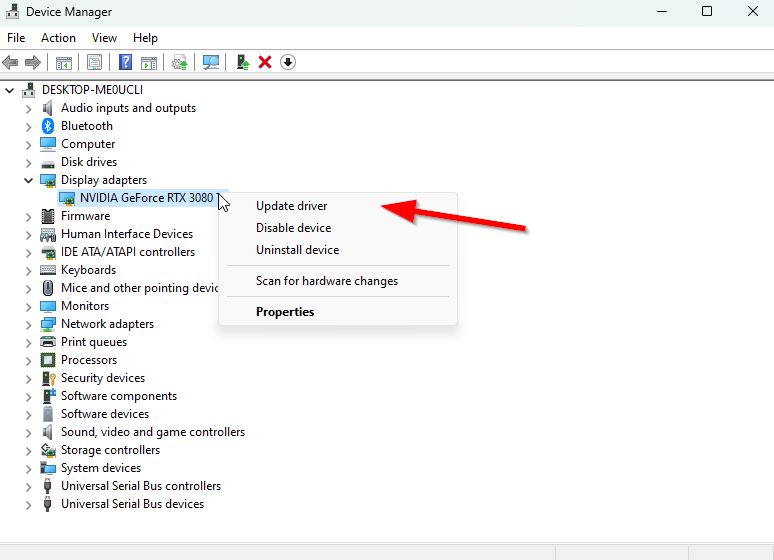Regarding the open-world action fantasy role-playing game, Avalanche Software and Warner Bros Games have done a great job by releasing Hogwarts Legacy in February 2023. It’s an immersive single-player title where you can fully control the action and explore the adventurous journey in the wizarding world. Though the title has received positive reviews on Steam, some players complain that Hogwarts Legacy is Not Using GPU on the PC.
Hogwarts Legacy is not a new video game that encounters low GPU (graphics processing unit) usage on the Windows computer during startup and gameplay sessions. It seems that most PC games do have some stability issues or bugs with the Windows system as well as PC hardware optimization at a certain level which eventually triggers multiple conflicts such as lags, stutters, graphical glitches, frame drops, 100% CPU usage, and so not using GPU or low GPU usage.
It’s also quite surprising that low-budget and mid-budget gaming PCs and some high-end gaming rigs can have issues with using graphics card resources on the Windows system. So, no matter what specification you’re using, the Hogwarts Legacy title might go through some hurdles unless you’ve optimized in-game graphics settings.
Also Read

Page Contents
Fix: Hogwarts Legacy Not Using GPU
There are plenty of potential reasons applicable behind the GPU not using issue with your PC games that you should consider checking out and try fixing completely. Well, it includes V-Sync is turned on, Motion blur is on, Raytracing issues, problems with the graphic driver, not using the dedicated graphics card, corrupted or missing game files, outdated game patch version, background running tasks, and more.
It’s worth mentioning that following this troubleshooting guide will mostly resolve such an issue. So, without wasting any more time, let’s jump into it.
1. Check System Requirements
According to the official Hogwarts Legacy PC Specs site, the minimum GPU requirement of the game is either NVIDIA GeForce GTX 960 4GB or AMD Radeon RX 470 4GB. If you want a smoother gameplay experience, your PC should have the NVIDIA GeForce RTX 2080 Ti or AMD Radeon RX 6800 XT graphics card. So, remember that your PC configuration is more than compatible enough to run Hogwarts Legacy.
2. Use a Dedicated Graphics Card
Ensure that your computer system uses the dedicated or external graphics card to run the Hogwarts Legacy game. It’ll eventually reduce game stutters, lags, and frame drops without any doubt. If you don’t know which settings to adjust, follow the steps below.
For Nvidia:
You can do the following if you’re using the Nvidia graphics card.
- Right-click on the desktop blank screen > Click on NVIDIA Control Panel.
- Click on 3D settings > Select Manage 3D settings in the left pane.
- Select the Program Settings tab > Choose Hogwarts Legacy from the drop-down list.
- Now, select a High-performance NVIDIA processor.
- Save changes and reboot the PC to apply changes.
For AMD:
AMD graphics card users can do the following.
- Right-click on the desktop blank screen > Select AMD Radeon Settings from the context menu.
- Now, click on System > Select Switchable Graphics.
- Make sure to save changes and reboot the PC to apply changes.
3. Update GPU Drivers
An outdated or corrupted graphics card driver can trigger multiple game or system performance issues. It’s highly recommended to check the graphics driver update. To do so:
- Press the Win+X keys to open the Quick Link Menu.
- Click on Device Manager from the list > Double-click on Display adapters.
- Right-click on the dedicated graphics card that you’re currently using.

- Click on Update driver > Choose Search automatically for drivers.
- If the latest update is available, it’ll automatically download & install the latest version.
- Once done, restart the computer to apply changes immediately.
Alternatively, you can manually download the latest graphics driver version and install it on the PC via the official website. Download the graphics driver file respective to your graphics card model and manufacturer. Nvidia graphics card users can update the GeForce Experience app via the Nvidia official site, and AMD graphics card users can visit the AMD website for the same.
4. Update Hogwarts Legacy
Even an outdated game patch version can trigger several potential gaming device issues that lead to crashes, lags, stutters, CPU/GPU-related issues, and more. It’s recommended to check for the game update periodically and install the latest update whenever available. You can follow the steps below to do the same.
For Steam:
- Open the Steam client > Go to Library.
- Click on Hogwarts Legacy from the list of installed games on the left pane.
- Now, the client will automatically search for the available update.
- You’ll see the Update option > click on it if an update is available.
- Wait for a couple of minutes or so until the game update completes. [Depends on the storage space and internet connectivity]
- Once done, reboot the PC.
For Epic Games Launcher:
- Open the Epic Games Launcher > Head over to Library.
- Now, click on the three dots icon next to Hogwarts Legacy.
- Make sure the Auto Update option is turned on.
5. Verify and Repair Game Files
Corrupted or missing game files may trigger issues with the game launching or running smoothly. Verify the game files and repair them via the Steam or Epic Games Launcher by following the steps below to easily fix Hogwarts Legacy Not Using GPU.
For Steam:
- Open the Steam client on the PC and log into the account > Head over to Library.
- Right-click on the Hogwarts Legacy game from the left pane.
- Click on Properties > Click on the Local Files tab.
- Then click on Verify Integrity of game files…
- Now, wait for the process to complete and close the Steam client.
- Finally, restart the PC to apply changes.
For Epic Games Launcher:
- Open the Epic Games Launcher > Go to your Library.
- Click on the three dots icon next to Hogwarts Legacy.
- Click Verify > Wait for the repair process to be completed.
- Once done, reboot the PC to apply changes.
6. Try Disabling Overlay Apps
Sometimes a couple of applications may come with an additional overlay app that basically helps the streamers or gamers a lot. However, these overlay apps can eventually conflict with the game files to run smoothly and may cause several issues like FPS drops, black screen issues, lags, glitches, etc. You should try disabling the overlay apps manually before launching the game again to cross-check whether the crashing issue has been fixed or not. To do so:
Disable Discord Overlay:
- Launch the Discord app > Click on the gear icon at the bottom.
- Select Overlay under App Settings > Turn on the Enable in-game overlay.
- Click on the Games tab > Select Hogwarts Legacy.
- Finally, turn off the Enable in-game overlay toggle.
- Make sure to reboot your PC to apply changes.
Disable Xbox Game Bar:
- Press the Win+I keys to open Windows Settings.
- Click on Gaming > Go to Game Bar > Turn off Record game clips, screenshots, and broadcast using the Game bar option.
Disable Nvidia GeForce Experience Overlay:
- Launch the Nvidia GeForce Experience app > Head over to Settings.
- Click on the General tab > Disable the In-Game Overlay option.
- Finally, restart the PC to apply changes, and launch the game again.
There are some other overlay apps that can cause trouble for you something as MSI Afterburner, Rivatuner, RGB software, etc. You should turn them off as well.
7. Close Background Running Tasks
Unnecessary background running tasks or programs can eat up a lot of system resources like CPU or Memory usage literally reducing system performance. Hence, the startup crashing, lagging, and not loading issues appear quite often. Simply, close all the unnecessary background running tasks completely. To do this:
- Press the Ctrl+Shift+Esc keys to open Task Manager.
- Now, click on the Processes tab > Click to select tasks that are unnecessarily running in the background and consuming enough system resources.
- Click on End Task to close it one by one.
- Once done, restart your system.
8. Turn Off V-Sync
V-Sync or FreeSync mostly comes enabled by default in the Hogwarts Legacy game. It seems that V-Sync or FreeSync is somehow conflicting with the game’s refresh rate and monitor’s refresh rate. So, it’s better to simply turn off this feature on the PC by following the steps below.
For Nvidia:
- Run Steam or Epic Games Launcher.
- Launch Hogwarts Legacy > Go to the in-game Settings menu.
- Under Display Options, make sure to turn off V-Sync.
- Now, open NVIDIA Control Panel > Select Manage 3D Settings in the left panel.
- Under Global Settings, scroll down to Vertical Sync and turn it off.
- Click on Apply then reboot the PC to apply changes.
For AMD:
- Make sure to launch Hogwarts Legacy > Open the in-game Settings menu.
- Under Display Options, make sure to turn off V-Sync.
- Now, open the AMD Radeon app and head over to the Global Settings option.
- Under the Global Graphics tab, check to Wait for Vertical Refresh option.
- Then click on the Down arrow icon > From the drop-down list, select Always Off to deactivate VSync or Enhanced Sync.
- Finally, Turn Off the Wait for Vertical Refresh option, and restart the PC.
9. Disable Raytracing
Last but not the least, you should try disabling the Raytracing feature on your game settings menu to ensure there is no issue with the overkill optimization. Raytracing is a pretty useful feature for high-end gaming rigs to offer stunning visual quality without compromising other aspects. But if your PC is not that powerful or old enough, you should turn it off by following the steps below.
- Open the Hogwarts Legacy game via Steam or Epic Games.
- Now, go to the in-game Settings menu.
- Under Graphics options, select both the Fidelity and Raytracing feature.
- Make sure to select Performance to disable Raytracing. [You can select Balanced to reduce Raytracing]
- Once done, reboot the PC to apply changes.
That’s it, guys. We assume this guide was helpful to you. For additional queries, you can comment below.
